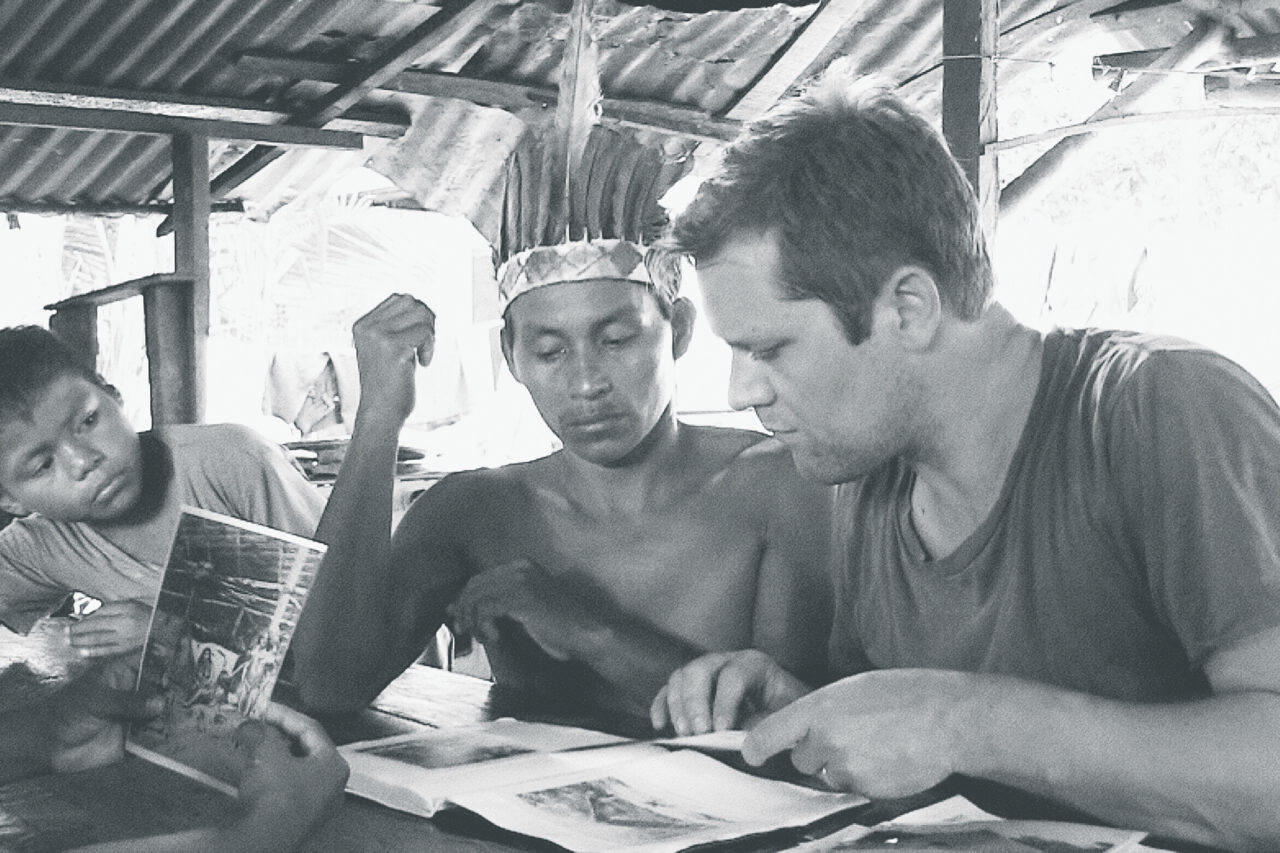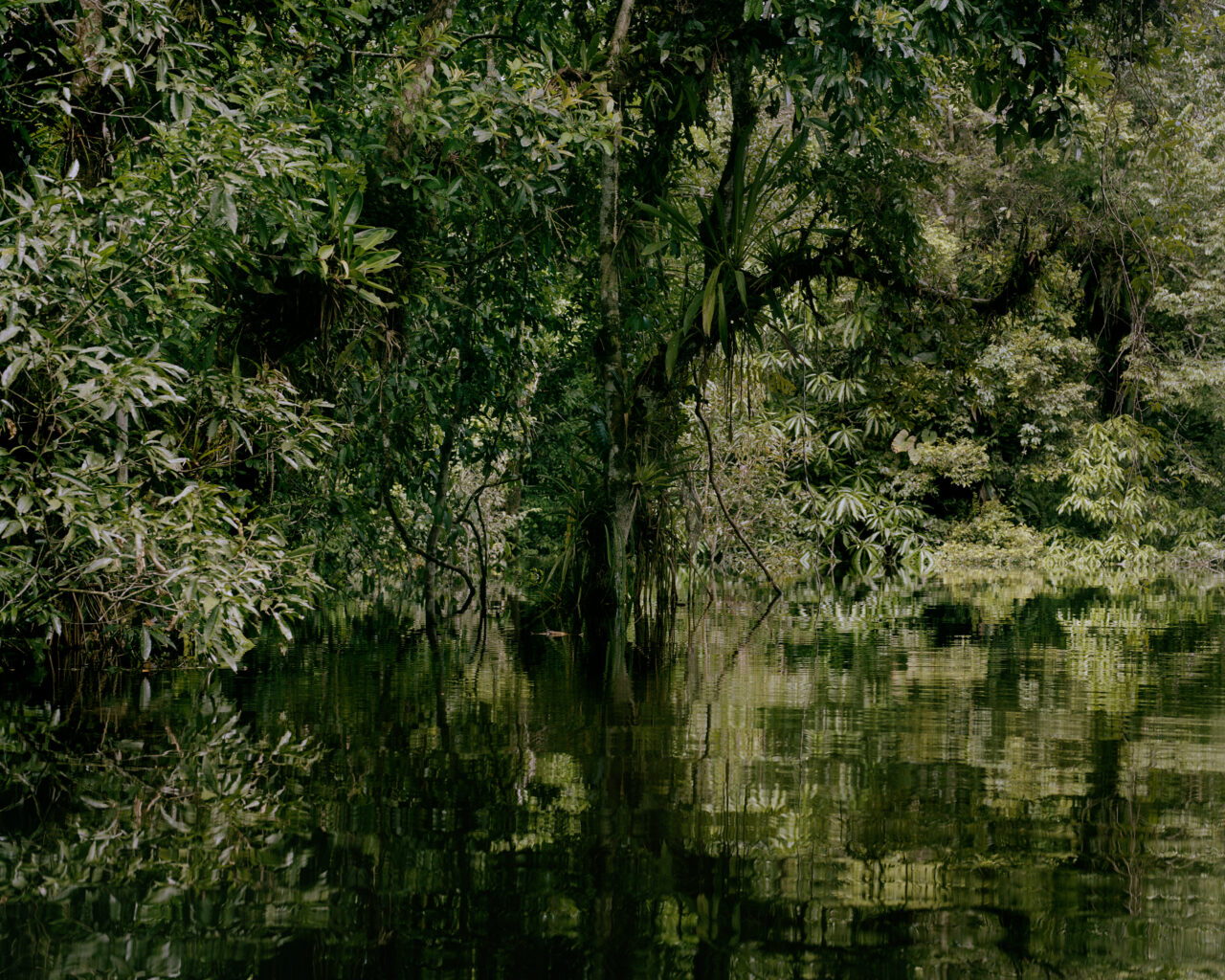The winner of the 1st prize in the DNRF Photo Competition 2024 opens a Gateway to New Knowledge and Insight.

“The most powerful driving force in human history must be the cultural encounter. It is the cornerstone of humanity and the key to our future. It is through meeting, exchanging, and genuinely listening to one another that we can move forward.”
These were the words of anthropologist Christian Vium, who, through numerous scientific projects, has traveled the world to explore Indigenous cultures and worldviews, using his camera as a tool.
Vium is also the winner of the DNRF’s photo competition 2024 with the photograph entitled “Epiphany,” which was recorded on a tributary of the Solimôes River in the Brazilian Amazon close to the border with Peru and Colombia. The picture of the girl in the water is part of the research project REVISITED. Vium brings archival photographs from European and American collections back to the places where they were recorded and then reinterprets them with descendants of the Indigenous peoples portrayed in the original photographs.
“The core of the project is to sit with people and analyze these archive images, which are 100 to 150 years old and were recorded in the same areas and depict ancestors of those I am collaborating with. So, it’s an emotional space you get into, and the richness of detail that the people I collaborate with can draw from these images is remarkable. It’s astonishing how much they can interpret and understand from the picture.I would never have been able to see that myself in these pictures.”
“The ambition,” Vium continued, “is to establish a conversation across time and place that can contribute to the writing of history and challenge what we believe we know.”
Meet Vium and hear more about his photo:
Vium has visited Australia (2014), the Amazon (2015), and Siberia (2017) for the REVISITED project, where he follows in the footsteps of several photographers and scientists who have worked on the three continents between 1867 and 1912.

Reflections of a reality that is open to interpretation
One of them is the German botanist turned photographer Albert Frisch, who traveled to the Alto Solimôes River (Amazon) in 1867, where he recorded some of the first photographs of Indigenous peoples. In 2015, Vium chose to bring these photographs to the same area of the Amazon:
“I found Frisch’s photos extremely interesting because he was one of the first to photograph in the Amazon, and there are certain aspects of his work that are truly unique. Frisch was one of the first to experiment with photo-montage, and his images point to the inherent manipulation involved in photography. Well, we know that a photograph is indexical – it is an image of something “real,” but it can be manipulated in an enormous number of ways; it is a fragment of a reality that is far more extensive and complicated, and this is very clear in Frisch’s visual material.”

Vium continued to explain that he brings back to the Solimôes River some of the main themes that emerge in Frisch’s photographs and tries to illuminate and express them. But certain events caused the project to take a slightly different direction:
“Frisch’s photographic work was an important point of departure, but due to the way I ended up working in the Amazon, I chose to move a bit away from the one-on-one, dialectical conversation I had with the original photographs, for example, in Australia, and I started working in a space that is more allegorical and symbolic. So, the photographs we created in the Amazon do not engage in an obvious dialogue with the motifs in Frisch’s work, in the sense that he composed his images quite differently. There are overlaps and similarities in motifs, but the way I have worked aesthetically is, I would say, more subversive, ambiguous, and open to interpretation.”

Vium invites, in his own words, the audience into a world that is immensely sensory and immersive with the photographs from the Amazon:
“But then you have this mirror all the time, which is the water, reflecting and distorting the world above it. I was conceptually interested in working with that mirror as a metaphor: what’s going on with this shimmering? The world that the water reflects is not static. It does not reproduce the world one-to-one. It challenges and distorts, reflecting in a way that might make us contemplate what is reflection and what is ”reality,” so to speak.”
The past shows the way into the future
”Photographs are interesting to work with because they are both concrete and abstract at the same time,” said Vium, as he explained how sitting together and discussing the photos, analyzing them, and comparing them opens ways to understand the image and the context in which it was created—both in the past, now, and in the future. And gaining a deeper insight into how Indigenous peoples live in and understand their surroundings can contribute important knowledge about our contemporary time.
“We must challenge our habitual thinking, challenge what we take for granted, in order to move forward in a sustainable way. We are facing a significant climate crisis, with challenges that are largely a result of the society we have created and the way we produce and consume. Indigenous people understand what it means to live in a close and caring relationship with their environment, which we in the West have strayed from, forgotten, or ignored. We need to lean into the perspectives and knowledge that already exist, based on thousands of years of experience.”
